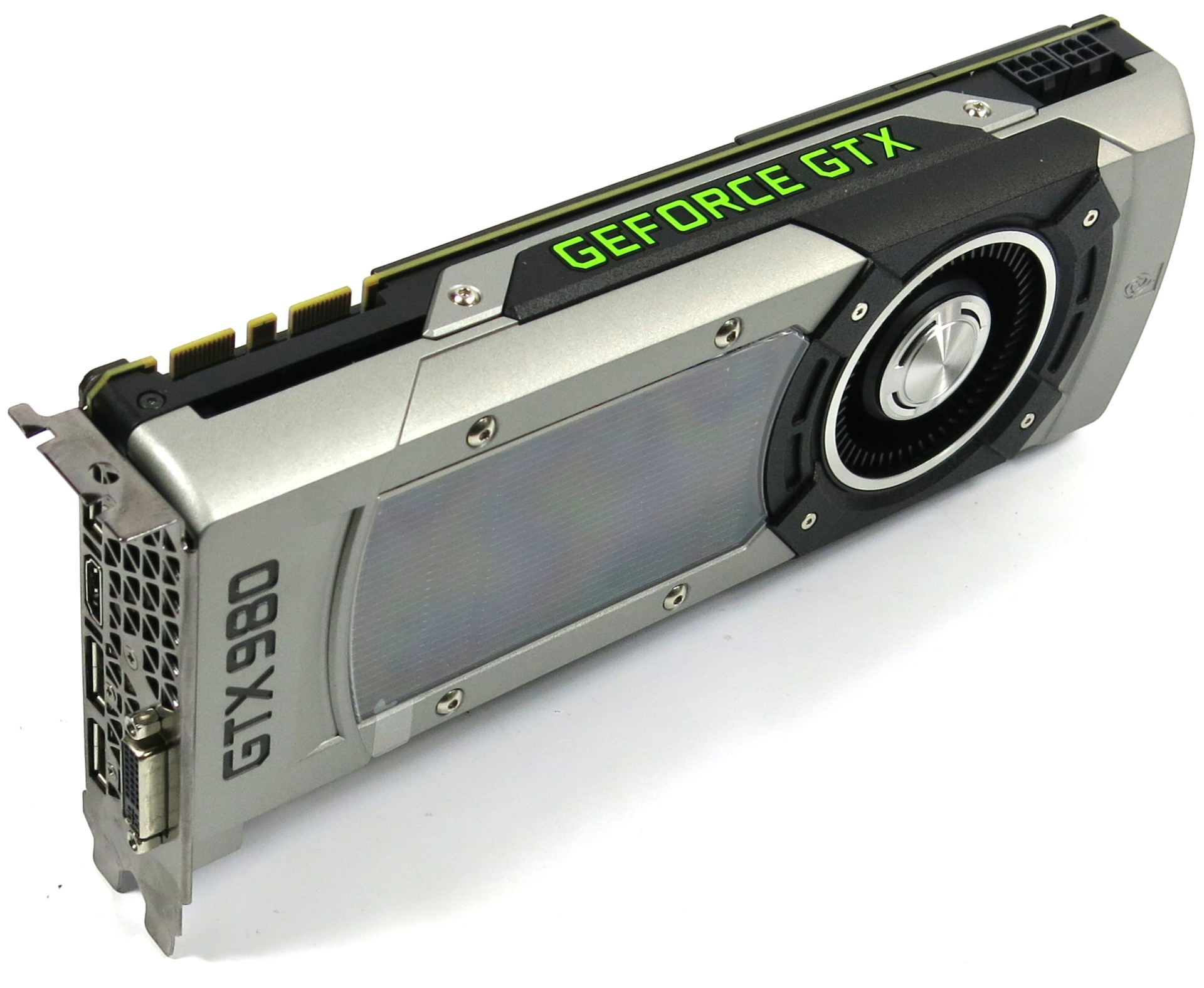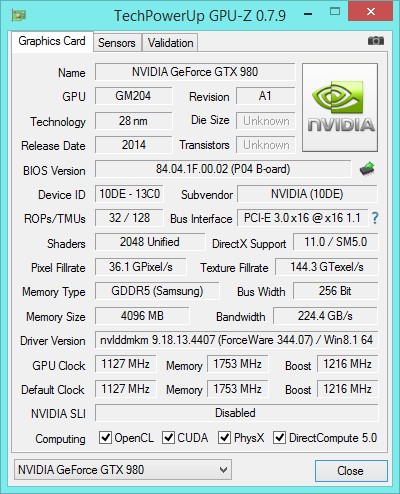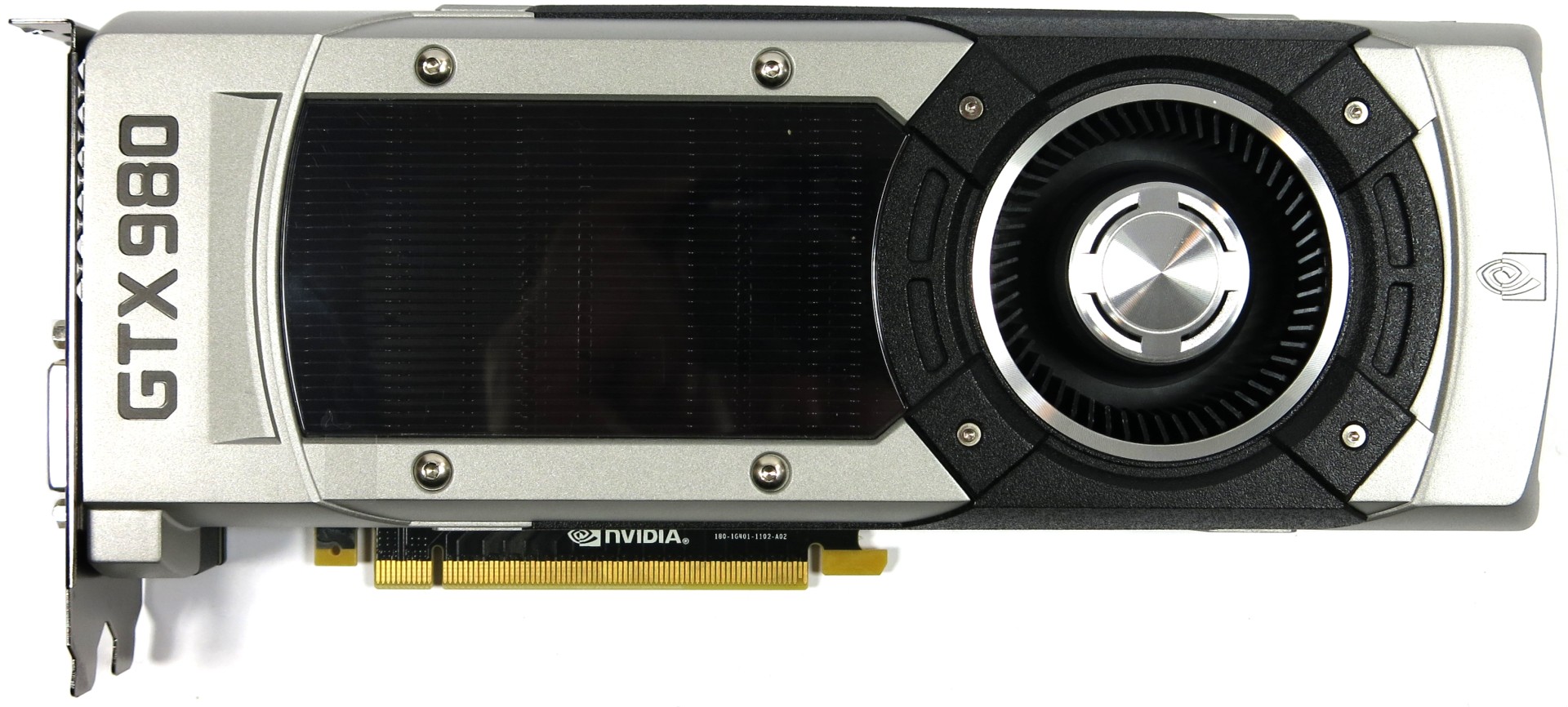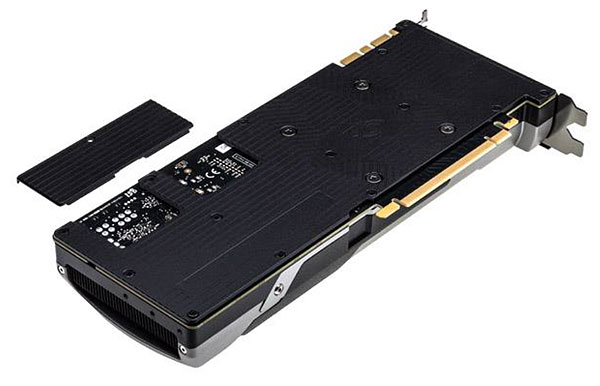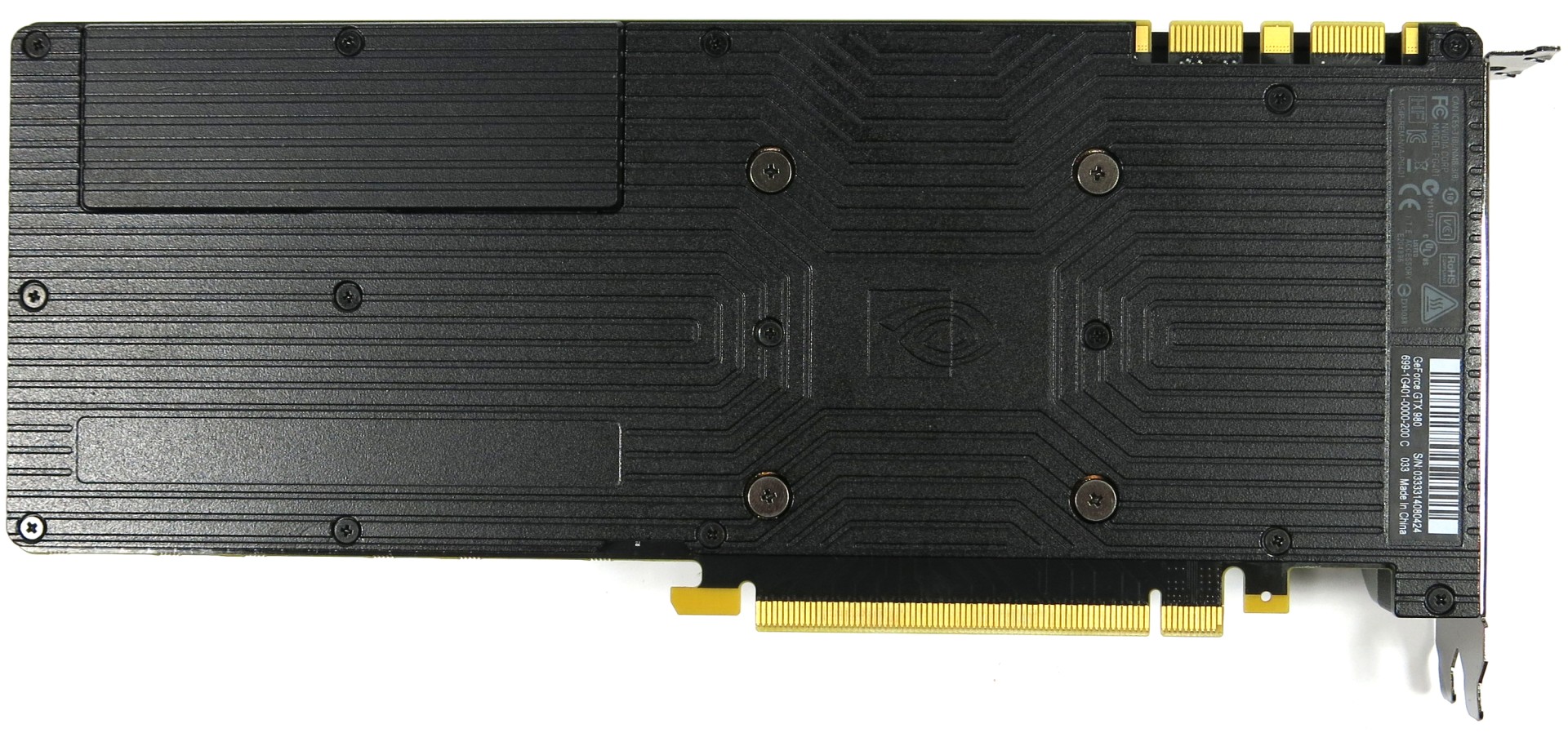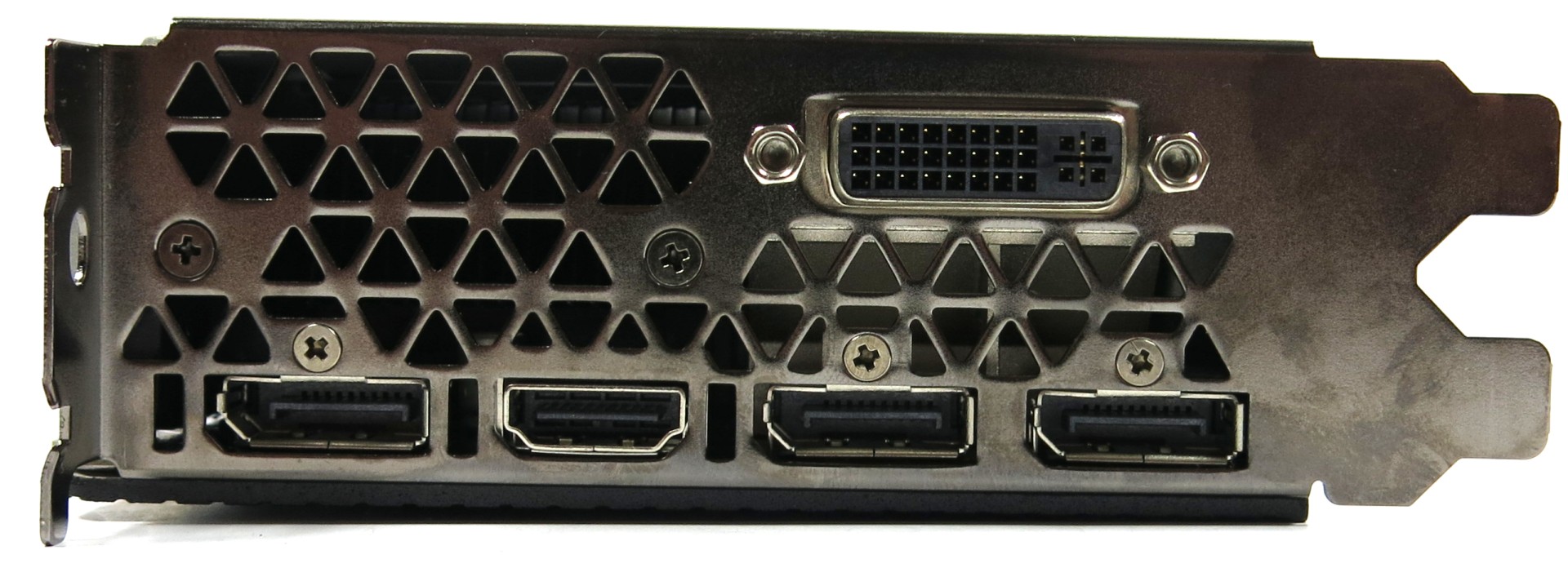Nvidia GeForce GTX 970 And 980 Review: Maximum Maxwell
Nvidia GeForce GTX 980 Reference Card
At this point, let's examine Nvidia's reference design for the GeForce GTX 980. It's dressed a slight variation of the same classy outfit that the company debuted in the GeForce GTX 690. This isn't a particularly large card but it does have significant weight to it, some of which is attributable to the metal backplate.
| The Speeds And Feeds | |
|---|---|
| Form Factor | Dual-slot design |
| Length (from Slot Panel to End) | 268 mm (10.5") |
| Height (from Slot to Top) | 111 mm (4 3/8") |
| Depth 1 (from PCB to Front Cover) | 36 mm (1 5/16") |
| Depth 2 (from PCB to Back Plate) | 3 mm (1/8") |
| Weight | 1030 g |
| Connectors | 1x DL-DVI-I, 1x HDMI 2.0, 3x DisplayPort |
The 65mm radial fan is the same model used on the original GeForce Titan. Indeed, the design of the GeForce GTX 980 is almost indistinguishable from the titan at a casual glance (until you see the model number emblazoned on the side, anyway). The main visual difference is that the cooling fins behind the transparent cover are painted black.
The back plate has a nifty little door that can be removed if the user wishes to improve cooling when placed beside another card in SLI. As a point of interest, the Titan does not have a back plate.
Note the two 6-pin PCIe power connectors: it's odd to see so few pins on a high-end card. The GeForce GTX name glows in green when the card is in operation, of course.
Output options consist of three DisplayPort 1.2 ports, a dual-link DVI port, and a single HDMI port. This is the first graphics card with an HDMI 2.0 plug by the way, which allows for 4K video at 60 Hz. With the previous HDMI standard, two ports need to work in tandem to handle the bandwidth required by a 4K 60 Hz display.
Get Tom's Hardware's best news and in-depth reviews, straight to your inbox.
Current page: Nvidia GeForce GTX 980 Reference Card
Prev Page New Features Next Page Gigabyte GTX 980 WindForce OCDon Woligroski was a former senior hardware editor for Tom's Hardware. He has covered a wide range of PC hardware topics, including CPUs, GPUs, system building, and emerging technologies.
-
lancear15 I was waiting for Tom's review to make my final decision, the 980 is definitely going into my current 5960x build! I cant wait.Reply -
HKILLER so how long before you do a round up?i mean this time i've seen some pretty crazy looking cards (Zotac's Extreme AMP! edition looks crazy and the Inno3D too)and EVGA has shown off ACX 2.0 which they claim to be the most efficient GPU air cooler in the world...so many to choose from also EVGA FTW has been nicely overclocked i've seen it performing almost on par with 980Reply -
realibrad byt he way... Last page 2nd sentence after the graph of Avg game performance.Reply
I was hoping for more performance but the efficiency is quite nice. They just put pressure on the top end and gave us a price reduction, instead of overall performance gains. -
balister Very nice, but I still want to see what the power consumption along with what might be possible with the drop to 20nm (since this is still 28nm).Reply
Likely, we're going to see a Maxwell Titan equivalent come in the next year or so as these are a x04 much like Kepler with the 670/80s were and we're still going to be waiting to see what the x10 will be with the Maxwell architecture. -
MANOFKRYPTONAK Why didn't you include an overclocking comparison? Why didn't you include the 780, but included the 770? Doesn't make much sense...Reply -
vertexx 970 is the real story until the 980ti comes out - what a value proposition with the 970!Reply
Good stuff here - but you guys were a bit slow on this one. Tom's Hardware is the first site I visit every morning. But with the delay of this article, I've been all over the net this morning on other sites that got their stuff out sooner. -
daveys93 Will there be a follow-up article about overclocking these cards? Other sites are showing results that both of the new cards are capable of 1500+ MHz on air (aftermarket coolers and even a few with stock coolers), which is a massive overclock. Looks like NVIDIA left the door open for some decent voltage increases, but many results have been in the 1450-1500 MHz range at stock voltage. I am a big fan of the thoroughness of Tom's articles so I am very interested in seeing overclocking results and analysis from this site.Reply
